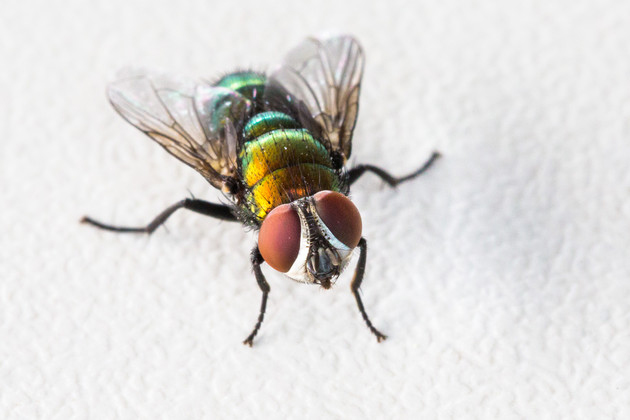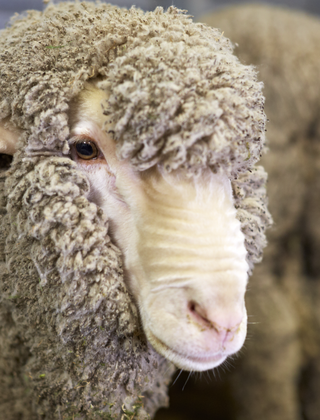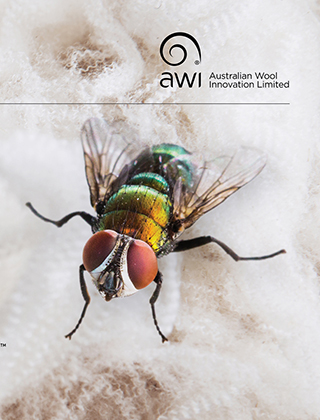New research to trap the sheep blowfly

A new three-year project aims to develop a more effective and potent way of trapping sheep blowflies so that blowfly populations can be suppressed in wool-growing areas of Australia, thereby reducing the incidence of flystrike.
Australian woolgrowers go to great lengths to prevent flystrike, often incurring substantial chemical and/or labour costs. However, a new project aims to develop an additional flystrike prevention option, with long-term effectiveness, minimal labour for woolgrowers, and the best outcomes for sheep.
The project, which began in December, aims to use scientific techniques to deliver a highly specific and potent trapping solution to reduce the build-up of sheep blowfly populations. It will tackle the limitations of current trapping options, which include their inability to target specific fly species and a negligible suppression of female numbers.
Leveraging funds to fight the fly
The new project is being carried out by Deakin University, with a grant from the Australian Government’s Australian Research Council, plus support and co-funding from AWI. It brings together the expertise of a multidisciplinary team of Deakin University researchers, in conjunction with AWI working with key stakeholders from woolgrower networks across the country.
“The new project’s preventive approach to flystrike is a highly promising initiative that has the potential to make a significant contribution towards developing a tool to combat the viability of the Australian sheep blowfly,” said AWI Program Manager, Animal Wellbeing and Industry Resilience, Carolina Diaz.
“It aims to provide an effective, eco-friendly, low-maintenance approach to flystrike, reducing woolgrowers’ reliance on insecticides that are limited in number and could have increasing issues with fly resistance.
“The new project aims to provide national benefit through improved animal welfare, reduced costs and labour for woolgrowers, and alignment with sustainable practices and market demand.”
R&D into blowfly behaviour
The research is led by Professor Michelle Harvey who is an experienced entomologist and one of the leading blowfly experts in Australia.
“The project will utilise chemical and molecular approaches to determine the key attraction cues for female flies to vulnerable sheep, determining specific factors that place a sheep at risk of flystrike, beyond traditional predictors such as dag and wrinkle scores,” Professor Harvey said.
“Few studies have truly understood the mechanisms of attraction, and this study utilises the natural biology of the fly-sheep interaction to target the most effective intervention point in the flystrike system. It adopts a proactive, preventive approach by removing the agent responsible for strike.
“This approach will utilise the expertise of a multidisciplinary team from the fields of entomology, biotechnology, analytical chemistry and genomics, to exploit blowfly biology and target its behaviour. Ultimately the aim is to develop a novel lure technology able to be commercialised and used on-farm, at scale across Australia.”
The lure will be tested on multiple properties and in states, taking into account geographic and climate variations across Australia, to determine the effect of the lure of wild fly populations and flystrike rates – see the box below for your chance to get involved. The project is due for completion at the end of 2026.
Your chance to get involved!
Woolgrower collaborators needed: Do you have fleece rot and flystrike issues?
The project will run across three consecutive flystrike seasons (Feb 2024 to May 2024; Sept 2024 to May 2025; Sept 2025 to May 2026) across Victoria, New South Wales, South Australia, Western Australia and Tasmania.
Researchers will partner with woolgrowers over the three years, with key activities for involved growers to include:
- Participation in a series of questionnaires including:
- Expression of Interest (1 X 10 mins: online form).
- Initial background interview (1 X 1–1.5 hours: via phone, zoom or in-person).
- Before season (annual) (3 X 30–45 mins: via phone, zoom or in-person).
- After season (annual) (3 X 30–45 mins: via phone, zoom or in-person).
- Exit feedback (1 X 10 mins: online form).
Time commitment estimation: 6.5 hours total involvement.
- Assisting Deakin researchers with non-invasive sampling of breech area, including skin swabs, wool samples (if available) and collection of maggots/flies from flystruck Merinos.
- Total of 40 samples will be collected per season: 10 X healthy, 10 X dermatitis (early stages of fleece rot), 10 X fleece rot, 10 X flystruck (additional: 5 X maggots and 5 X flies).
- Over the three seasons, there will be a total of 120 sample collections.
- Researchers will provide on-site and video training, and instructional materials, to guide growers with sampling procedures for times the researchers may not be present.
Time commitment estimation: 30 hours total involvement (10 hours per season; 15-minute allowance per sample collection).
- Allowing Deakin researchers to set up fly traps at farm sites throughout the project.
Woolgrowers will gain insightful knowledge regarding the bacterial trends identified from their property from the three flystrike seasons, based on a personalised written summary following each season and an opportunity to chat with the project team to discuss findings.
For more information and expressions of interest, please contact Professor Michelle Harvey via michelle.harvey@deakin.edu.au
This study has received Deakin University ethics approval (reference number: SEBE-2023-68). This is a government funded linkage project (LP210200707).
This article appeared in the March 2024 edition of AWI’s Beyond the Bale magazine. Reproduction of the article is encouraged.














